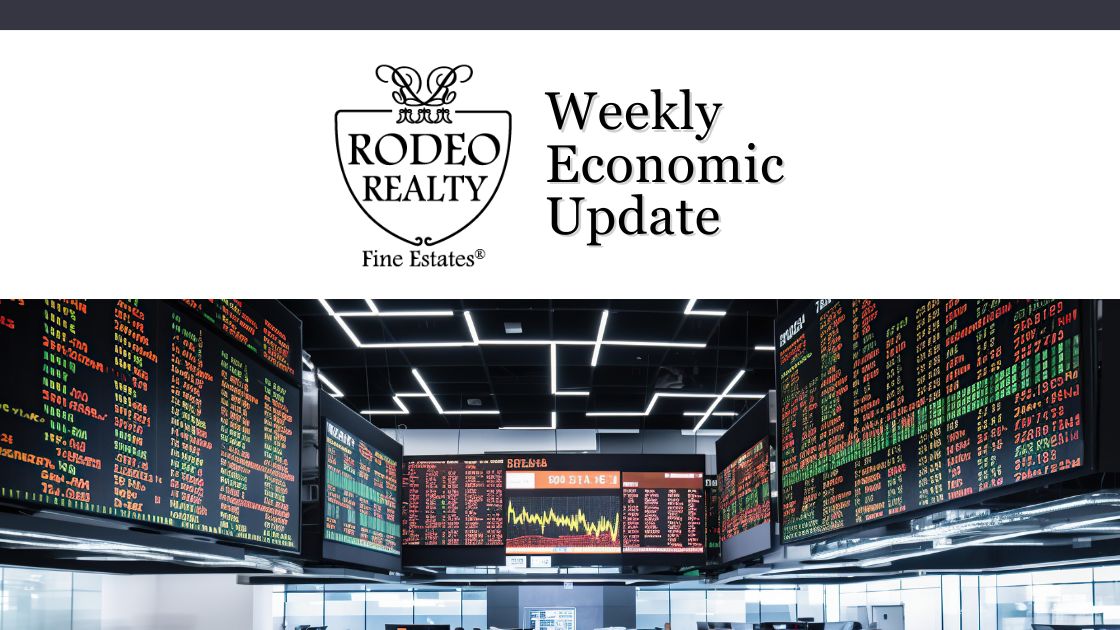| The economy was stronger than reported in the second quarter of 2025 – This week, the government released its final revision of the nation’s second quarter GDP. It showed that the economy grew 3.8% in the second quarter of 2025, up from its previous reported 3.2% increase.
Fed’s Preferred index showed that inflation increased for a fourth straight month in August – The Personal Consumption Expenditures Index (PCE) rose 2.7% in August from one year ago. Excluding food and energy, the Core PCE rose 2.9% from one year ago. Those numbers were in line with analysts’ expectations. They expect the inflation rate to rise further this year and begin to decline next year as the full effect of tariffs sets in. Stock Markets – The Dow Jones Industrial Average closed the week at 46,247.29, down 0.2% from 46,315.27 last week. Year-to-date, it is up 3.8% from 44,544.66 on December 31, 2024. The S&P 500 closed the week at 6,643.70, down 0.3% from 6,664.36 last week. Year-to-date, the S&P is up 10% from 6,040.53 on December 31, 2024. The Nasdaq closed the week at 22,484.07, down 0.7% from 22,631.46 last week. Year-to-date, it is up 14.6% from 19,627.44 on December 31, 2024. U.S. Treasury bond yields and mortgage rates increased this week after the final GDP revision showed that the economy was hotter than previously reported and that inflation was continuing to tick higher. – The 10-year treasury bond closed the week yielding 4.20%, up from 4.14% last week. The 30-year treasury bond yield ended the week at 4.77, up from 4.75% last week. We watch bond yields because mortgage rates follow bond yields. Mortgage rates – Every Thursday Freddie Mac publishes interest rates based on a survey of mortgage lenders throughout the week. The Freddie Mac Primary Mortgage Survey reported that mortgage rates for the most popular loan products as of September 25, 2025, were as follows: The 30-year fixed mortgage rate was 6.3%, up from 6.26% last week. The 15-year fixed was 5.49%, up from 5.41% last week. The graph below shows the trajectory of mortgage rates over the past year. August home sales – This week, the California Association of Realtors and the National Association of Realtors released their August 2025 home sales report. You can run a report on your city or zip code with the same data at RodeoRe.com. U.S. existing-home sales – August 2025 – The National Association of Realtorsreported that existing-home sales totaled 4.0 million units on a seasonally adjusted annualized rate in August, up 1.8% from the number of homes sold last August. The median price paid for a home sold in the U.S. in August was $422,600, down from $435,300 in July, and up 0.2% from $414,200 one year ago. There was a 4.6-month supply of homes for sale in August, up from a 4.2-month supply last August. First-time buyers accounted for 28% of all sales. Investors and second-home purchasesaccounted for 21% of all sales. All cash purchases accounted for 28% of all sales. Foreclosures and short sales accounted for 2% of all sales. California existing-home sales – The California Association of Realtors reported that existing-home sales totaled 264,240 on an annualized basis in August, up 0.9% from 261,820 in July. Year-over-year sales were down 0.2% from a revised 264,640 annualized home sales last August. The statewide median price paid for a home in was $899,140 in August, up 1.2% from $888,740 in August 2024. The unsold inventory index showed that there was a 3.9-month supply of homes for sale in August, down from a 3.2-month supply of homes for sale one year ago. The graph below shows CAR sales data by county for Southern California.
Have a Great Weekend! |
News & Media

 Freddie Mac was chartered by Congress in 1970 to keep money flowing to mortgage lenders in support of homeownership and rental housing. Their mandate is to provide liquidity, stability, and affordability to the U.S.
Freddie Mac was chartered by Congress in 1970 to keep money flowing to mortgage lenders in support of homeownership and rental housing. Their mandate is to provide liquidity, stability, and affordability to the U.S.